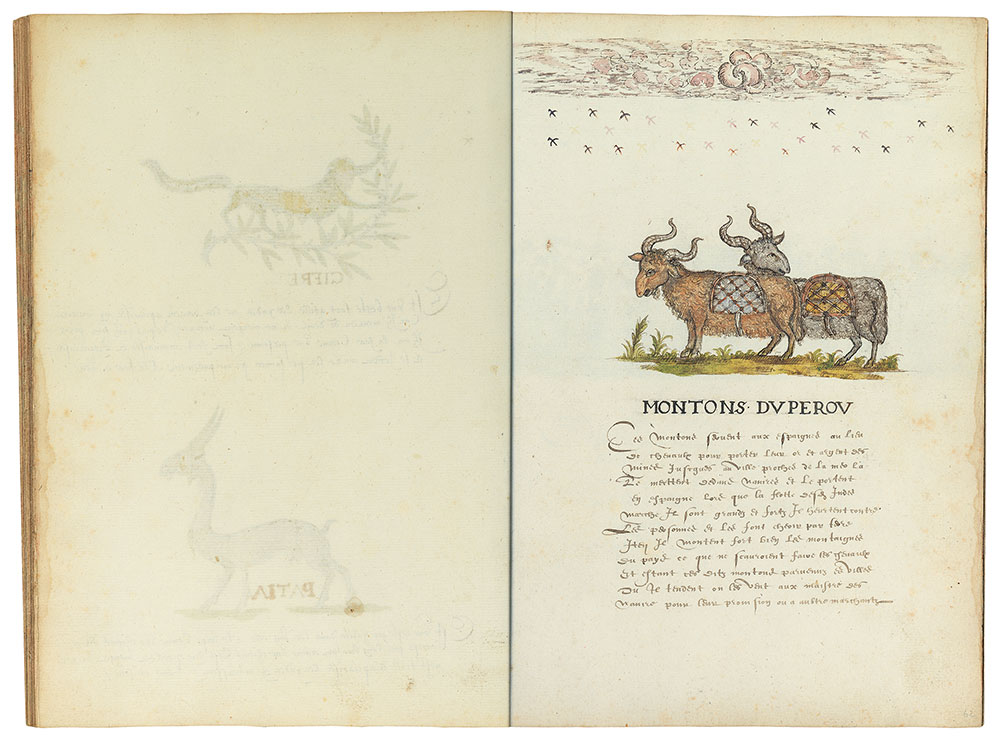Folios 61v–62r

Histoire Naturelle des Indes
Illustrated manuscript
Bequest of Clara S. Peck, 1983
In 1983, The Morgan Library & Museum received, as the bequest of Clara S. Peck, an extraordinary volume whose beautiful paintings and descriptions document the plant, animal, and human life of the Caribbean late in the sixteenth century. Spaniards had already begun to exert influence over the indigenous people of the area when explorers from England and France arrived, among them Sir Francis Drake. The volume, known as the Drake Manuscript and titled Histoire Naturelle des Indes when it was bound in the eighteenth century, gives us a wonderful picture of daily life at the time of Drake's many visits to the region. Although Drake's connection to the manuscript is uncertain, he is mentioned on more than one occasion by the authors. Drake himself is known to have painted, but none of his work survives.
Contents: 199 images of West Indian plants, animals and human life, with accompanying manuscript captions written in late sixteenth-century French.
Medium: Most of the illustrations consist of a black chalk underdrawing and a combination of pen and brown ink with watercolor; on some images selected areas have also been glazed with a gum.
Binding: Bound or rebound in brown leather in the late 18th century.
Pagination: Penciled folio numbers (1–125) in lower right corner of each page were added by The Morgan Library & Museum. Folios 92v–93, 93v–94, and 95v–96 are fold-out leaves.
Montons Du Perov (Sheep of Peru)
These sheep are used by the Spaniards instead of horses to carry their gold and silver from the mines to the towns near the sea. There they are put on ships and taken to Spain when the fleet of the Indies sets out. They (the sheep) are big and strong. They jostle the people and make them fall down. They are very good at climbing the mountains of the country which the horses could not do, and when these sheep have arrived at the towns of their destination they are sold to the master of the ship or another merchant as provision.